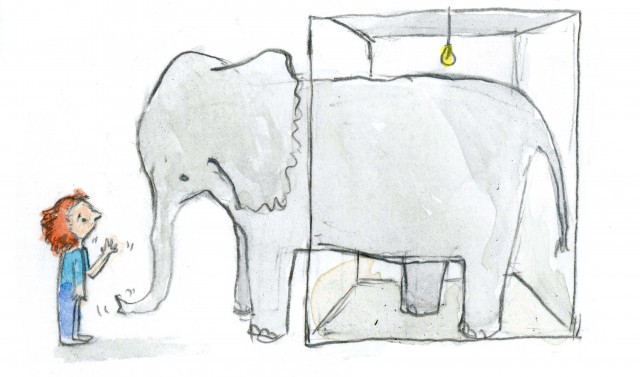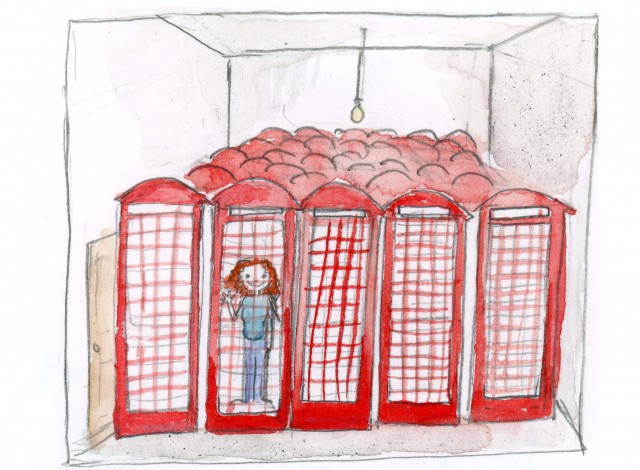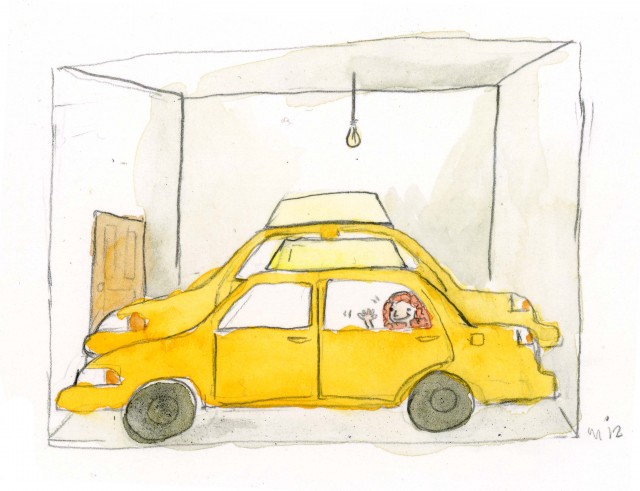What to Expect When You’re Expecting to Live in New York City

In most places, once you move to a new apartment, you can survey your new digs with satisfaction and begin unloading boxes, secure in the knowledge that you probably won’t have to move again for a little while. You can hang pictures, assemble bowls of potpourri, maybe even paint the walls. After all, until you decide it’s time to boomerang home to live with your parents again, or move to Seattle to join your girlfriend on her new houseboat, this is home! Settle in.
Life in New York is different. You probably know that it’s expensive to live here, but perhaps you have only a hazy sense of what kind of expensive we’re really talking about. Put it this way: If the Big Apple were an actual apple, it’d be an organic Honeycrisp ($4/lb).
In the same way that a Honeycrisp has limited surface area, the island of Manhattan only has so much space for residential buildings, and at least half of those buildings are filled with Never Say Die-type New Yorkers who have been here since 1972, fighting off the junkies, and damned if they’re going to surrender their rent-controlled two-bedrooms. About 10–15% of the rental housing stock that remains is controlled by the richest people in the world, for whom a pied a terre near Lincoln Center or a luxury downtown penthouse is a vital status symbol.
That means you can either duke it out with every other wide-eyed wannabe to overpay wildly for what’s left — hey, look, an alcove studio in Midtown West* for $2,590! — or, more wisely, look to the other four boroughs, where deals are easier to come by. That is not to say, however, that rentals in the hot spots of Brooklyn or Queens are cheap. They are “more affordable,” which means they probably won’t make you feel as much like your wallet was sexually assaulted and forced to walk home naked.
This one-bedroom in Battery Park for $3,600 is a good example. It is advertised at 687 square feet, which is so precise I’m guessing the realtor measured the inside of the closet. How big is 687 square feet? Well, for contrast, the Elephant Center affords each adult male elephant 3,100 square feet. (An elephant 2-bedroom, so to speak, is 4,900 square feet.) Sounds palatial, doesn’t it? If you’re just squeezing an elephant somewhere temporarily, say in a stall overnight, the Association of Zoos and Aquariums Standards for Elephant Management and Care from 2011 mandate a minimum of “no less than 600 square feet.” But in the long-term, that would be inhumane.

I can attest to that. My first real apartment in the city, which I shared with my then-boyfriend, now-husband Mr. Ben, was a 350-square-foot studio in Brooklyn Heights. That would hold just half an adult elephant. On the bright side, it would hold about 87 vintage English K6 telephone boxes! (If you didn’t have to worry too much about opening the doors.)
It worked okay for three years because we were young, desperate, and relatively compact, being short (me) and skinny (him). We paid about $1,550 in rent and counted our blessings. Still, no two adult human beings should have to share a space that would make Dumbo feel claustrophobic.
Our next apartment, a one-bedroom just outside of Park Slope, was $1,800 for three times as much space. We could have fit the entirety of the Brooklyn Heights studio in our new backyard, and two New York City medallion taxis in our living room / kitchen area.**

It was awesome. Like all awesome things, however, it was too good to be true for long. Our landlord sold the building out from under us to a nice Japanese family, and we found ourselves, once more, seeking maximum space for minimum money.
Overall, in the 7.5 years we’ve been in New York City, we’ve lived in two boroughs, four rentals, and one co-op, for which we coughed up enough money to buy Khartoum, the ill-fated racehorse from the Godfather. The co-op, our current home, is three rooms, plus one bathroom and a kitchen reminiscent of Harry Potter’s cabinet under the stairs^, and it would fit five dumpling trucks, although not all the impatient urban foodies waiting in line on an average Sunday. We bought the apartment so that we wouldn’t have to move again until we want to (say, because we buy an elephant). That is one of the ironies of living in New York: at some point, it can feel less expensive and less stressful to buy.
* Not a real neighborhood.
** A yellow cab is 6.5 ft wide and 17 ft long, for a total of 110 square feet.
*** A food truck is 7 ft wide and 24 ft long, for a total of 168 square feet.
^ Exact dimensions unavailable
Ester Bloom writes for money during the day, and for love all other times. She tweets in full sentences as @shorterstory.
Illustrations by Charrow. She lives in Brooklyn.
Support The Billfold
The Billfold continues to exist thanks to support from our readers. Help us continue to do our work by making a monthly pledge on Patreon or a one-time-only contribution through PayPal.
Comments